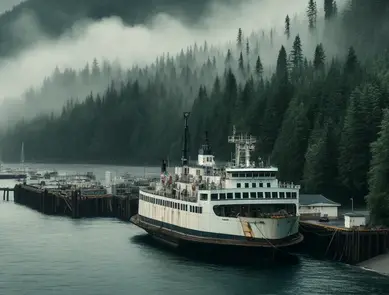Alaska’s Marine Highway System, once a bustling network of ferries vital for transportation across coastal communities, faces significant challenges as it grapples with declining ridership, financial instability, and a future filled with uncertainty. Initially launched six decades ago, the system has become crucial for Alaskans and visitors alike, providing a means to access groceries, medical appointments, family visits, and sports events. However, today, it operates only six ferries, a significant reduction from the 11 ferries a decade ago, with ridership plummeting from over 400,000 passengers annually at its peak to just over 180,000 last year.
The decline in confidence among the coastal populations can be traced back to a 2019 budget proposal by Governor Mike Dunleavy, which sought to drastically reduce ferry funding. Although the proposal was not implemented, it sparked fears of a future without the ferry service. These concerns were exacerbated by the COVID-19 pandemic, which saw ridership drop dramatically in 2020.
Despite these challenges, the Alaska Marine Highway System may be on the cusp of a revival, thanks to the federal infrastructure bill passed in 2021. The bill promises more than $400 million for operations and construction of new ferries, potentially revitalizing the system. However, the path ahead remains fraught with obstacles, including ongoing political debates over funding and a division between coastal communities dependent on the ferries and other Alaskans who view the service as non-essential.

